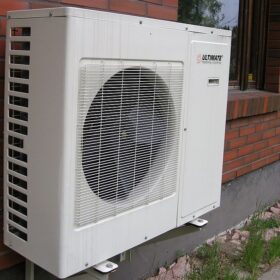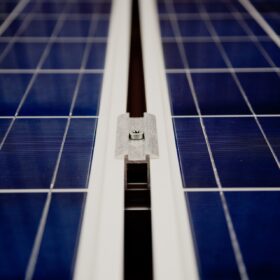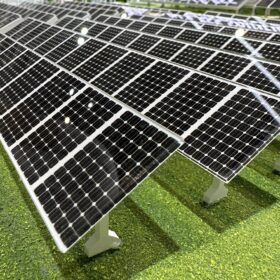UL Solutions expands testing for heat pumps
UL Solutions says it will expand heat pump testing at its facilities in Texas and Italy to meet rising demand in the heating, ventilation, and air conditioning (HVAC) industry.
Scientists design concentrating PV system equipped with cooling, waste heat recovery tech
Scientists in Iran have designed a CPV system that integrates a paraffin-based nanomaterials cooling system with fin, as well as thermoelectric generators that turns wast heat into electricity. Simulated results demonstrated that, with the cooling system in place, the PV efficiency improves by approximately 16.46% in clean conditions.
Researchers develop high transparency nanocellulose film for photovoltaics, packaging
The nanocellulose film can be used for light management as its light scattering is adjustable. It also exhibits a transmittance of over 80% at 550 nm.
Ensemble deep learning for PV cell defect detection
Researchers have tested eight stand-alone deep learning methods for PV cell fault detection and have found that their accuracy was as high as 73%. All methods were trained and tested on the ELPV benchmark dataset, which includes 2,624 electroluminescence (EL) images of PV cells.
The impact of wildfires on PV power generation
Scientists have quantified the impact of wildfires on the availability of direct normal irradiance and global horizontal irradiance at the state, regional, and national levels in the United States. They have found that direct irradiance is more sensitive to smoke than the PV-relevant global horizontal irradiance.
Unpacking solar-project data analytics
The PV industry is embracing artificial intelligence and machine learning (ML) techniques to automate operations and maintenance (O&M) diagnostics and predictive analytics in PV systems. More transparency and standard definitions are needed, however, as US-based Sandia Labs scientists Joshua Stein and Marios Theristis explain.
Scientist develops machine-learning method to identify faulty solar panels
A scientist in Sweden has developed a new hybrid local features-based method using thermographs to identify faulty solar panels.
Cooling PV modules with lauric acid and nanoparticles
Thai researchers developed three organic phase-change material (PCM) mixtures with nanoparticles to cool PV modules and improve efficiency. They used lauric acid blended with aluminum oxide, copper oxide, and magnesium oxide in an optimal 94:6 weight ratio, boosting module efficiency by up to 14.11%.
Digital twin for autonomous aerial monitoring of PV power plants
An international research team has created a digital twin that purportedly enables analysis of different scenarios on PV plants’ aerial monitoring. The new tool is claimed to reduce the risk associated with real-world experimentation and help identify the most effective strategies to improve PV system monitoring.
Hydrogen detection system for safety, quality control
Researchers in Japan have developed an optimized hydrogen gas measurement using TDLAS technique. It is reportedly able to achieve a detection range of hydrogen gas concentration of 0.01% to 100%. The group said that it can improve hydrogen safety and in turn, its adoption.










